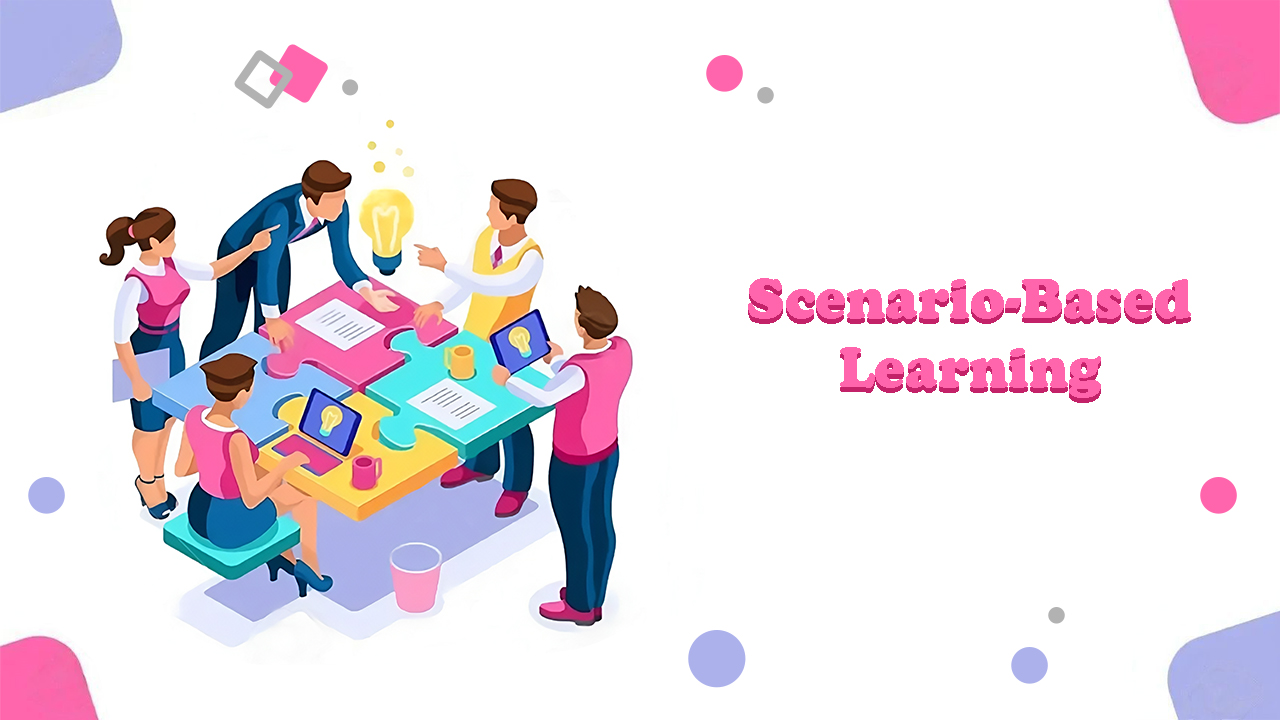The ultimate goal of any eLearning course is to equip learners with practical, long-lasting knowledge that they can confidently apply in real-world situations. Scenario-based learning (SBL) is an engaging and interactive training method that helps employees develop critical thinking, problem-solving, and decision-making skills by simulating real-life scenarios.
By integrating storytelling with experiential learning, scenario-based training immerses learners in realistic situations, making content relatable, memorable, and actionable. As today’s job roles demand strong analytical skills and adaptability, organizations must offer training that allows learners to practice making decisions, evaluate consequences, and refine their approach—all within a safe, controlled environment.
Scenario-based learning is a versatile training approach that can be applied across industries, from corporate training and healthcare to compliance and customer service. It enables employees to learn by doing, making it an invaluable tool for custom eLearning solutions.
Key Benefits of Scenario-Based Learning
1. Enhances Knowledge Retention
Engaging training content is essential for long-term learning retention. Scenario-based training encourages learners to actively participate, analyze situations, and make informed decisions rather than passively consuming information.
🔹 The story-driven approach helps learners connect with real-world contexts, improving comprehension and recall.
🔹 Hands-on experiences reinforce learning by allowing learners to apply knowledge in practical scenarios.
🔹 Realistic simulations make training more engaging and effective, ensuring that learners retain and use their knowledge when needed.
2. Provides a Safe Space for Learning from Mistakes
Mistakes are valuable learning opportunities, and scenario-based learning provides a risk-free environment where employees can practice and learn from errors without real-world consequences.
🔹 Trial-and-error simulations allow learners to refine their skills before applying them in their actual job roles.
🔹 Learners receive instant feedback, helping them understand why certain decisions work and others don’t.
🔹 Repeated practice builds confidence, reducing the likelihood of costly mistakes on the job.
3. Increases Training ROI
As learning environments continue to evolve, organizations need cost-effective, scalable training solutions that deliver measurable results.
🔹 Scenario-based learning is engaging, adaptable, and easy to update, making it a valuable investment.
🔹 It accelerates the learning process, helping employees retain knowledge and apply it effectively.
🔹 Organizations see a higher return on investment (ROI) as well-trained employees contribute to better performance, fewer errors, and increased efficiency.
4. Promotes Critical Thinking & Problem-Solving
One of the greatest advantages of scenario-based learning is its ability to enhance learners’ analytical and decision-making skills.
🔹 Learners must assess situations, evaluate multiple solutions, and make informed choices.
🔹 Real-world problem-solving exercises help employees navigate complex business challenges effectively.
🔹 Training fosters a proactive approach, preparing learners to adapt to dynamic workplace demands.
5. Engages Learners Emotionally
Emotional engagement is a key driver of effective learning, and scenario-based training stimulates the learner’s brain activity by immersing them in realistic, relatable situations.
🔹 Storytelling and character-driven scenarios create an emotional connection, making learning more impactful.
🔹 Engaged learners are more likely to stay motivated, complete training programs, and retain key concepts.
🔹 Emotionally charged experiences enhance decision-making skills, as employees can relate better to workplace challenges.
Conclusion
While developing scenario-based learning programs requires careful planning, the results are highly rewarding. This training method bridges the gap between theory and practice, ensuring employees are well-prepared to handle real-world challenges with confidence.
By integrating realistic simulations, interactive decision-making, and experiential learning, scenario-based training helps organizations:
✔ Boost knowledge retention and engagement.
✔ Provide a risk-free learning environment.
✔ Enhance critical thinking and problem-solving skills.
✔ Increase training ROI and employee performance.






